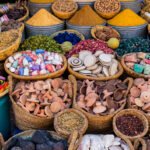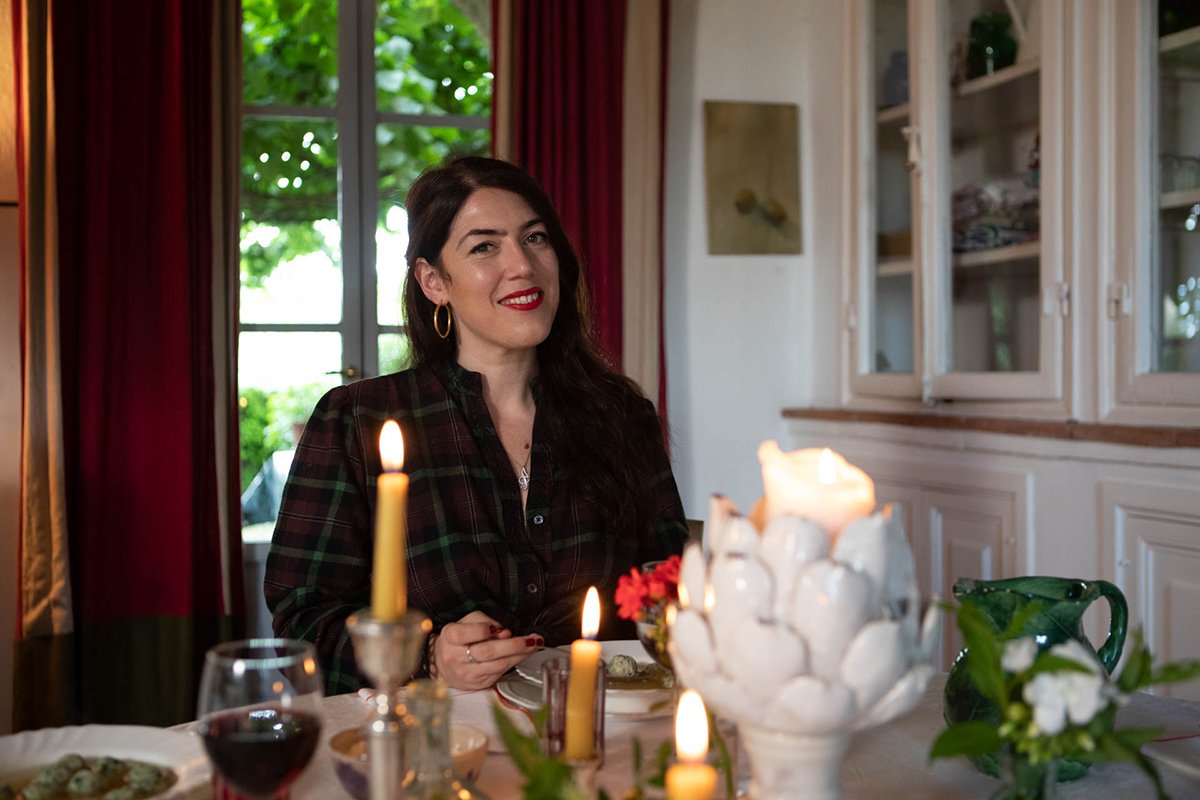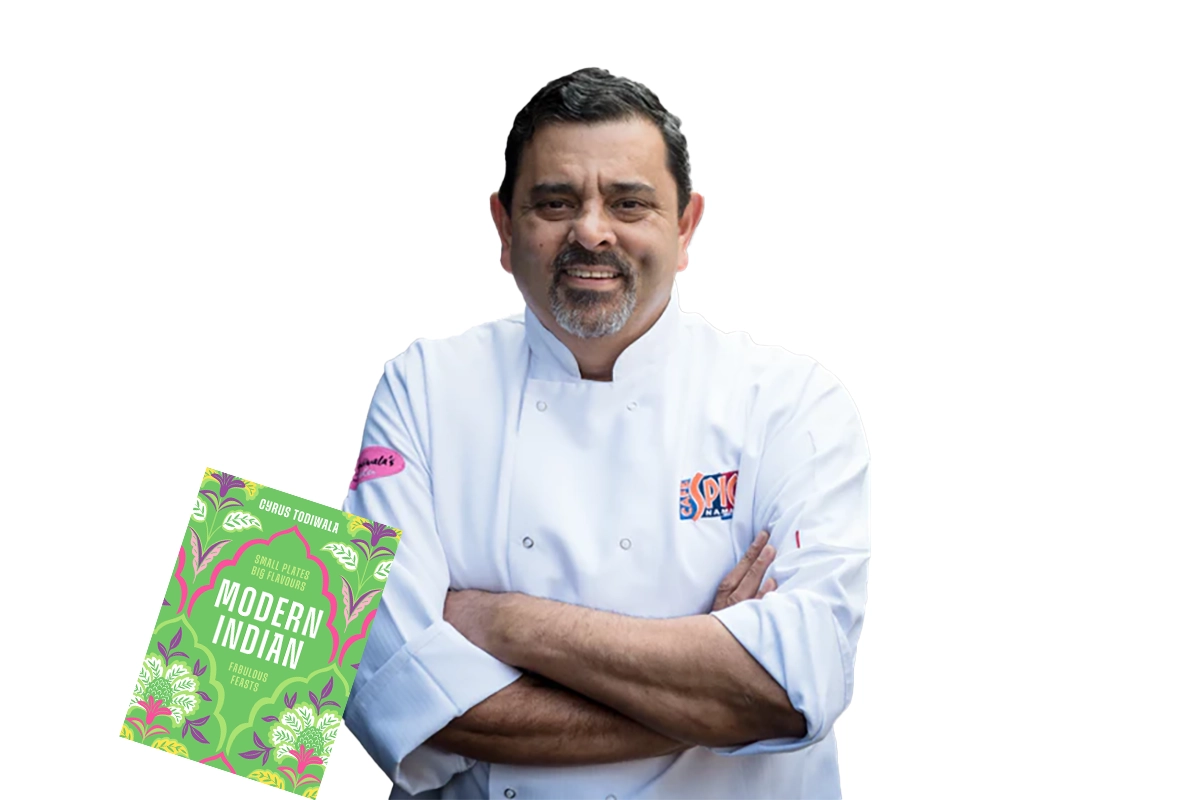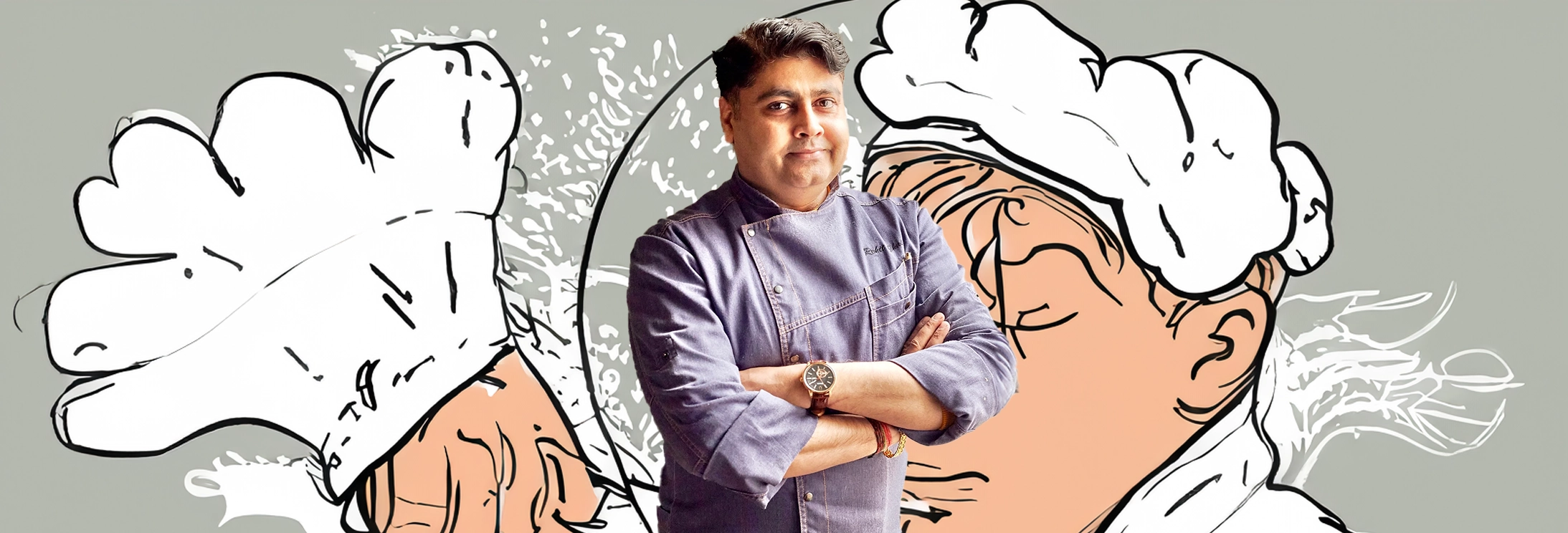Photo:Amber Guinness radiates warmth in her Tuscan kitchen, celebrating seasonal ingredients and the joys of slow, intentional cooking and living.
The Art Of Slow Living And Seasonal Cooking
Amber Guinness’s Winter in Tuscany explores the essence of seasonal Tuscan cooking, slow living, and heartfelt traditions through inspired recipes, treasured local gems, and the philosophy of intentional, soulful food preparation.
Amber Guinness’s Winter in Tuscany is so much more than a cookbook. It’s a love letter to the serene and cosy season in one of Italy’s most enchanting regions. Blending recipes with cultural insights and personal memories, Guinness invites readers to embrace the magic of Tuscan winters, combining rustic, hearty dishes with a slower pace of life. In this feature, she shares her inspirations, favourite recipes, and the hidden gems of Tuscany.
The “Quanto Basta” Philosophy
One of the key philosophies at the heart of Amber’s cooking is the Italian concept of quanto basta (Q.B.), which translates to “as much as you need.” Guinness explains, “These two little letters encapsulate much of what I adore about Italian cuisine—it’s less about rigid rules and more about trusting your instincts.” Rather than stress over precise measurements, the quanto basta approach encourages adding ingredients like olive oil or seasoning intuitively, based on taste and feel. “It’s liberating,” she says, “and it’s a reminder not to take cooking too seriously—mistakes can often be fixed as you go!”
Traditional Recipes, Modern Soul
In Winter in Tuscany, Guinness balances a love of tradition with a contemporary flair for making the most of simple ingredients. One recipe she is particularly proud of is her spaghetti all’ubriacona (drunkard’s spaghetti), an old recipe from Chianti. “It’s a clever way to use leftover wine that’s no longer good for drinking,” she notes. The spaghetti is cooked in a mix of wine and water, giving it a stunning violet hue, while the dish is enriched with pancetta and onions. “It’s the perfect marriage of resourcefulness and flavour—plus an ideal solution for that half-empty bottle of wine on the counter,” she adds with a smile.
Hidden Gems in Tuscany
Guinness’s love for Tuscany extends beyond the kitchen, as her book also highlights some of the region’s most treasured, lesser-known spots. A family favourite is the Benedictine monastery of Monte Oliveto Maggiore, nestled in the Crete Senesi. “It’s an extraordinary place, particularly in winter when it’s quiet, and you might have it all to yourself,” she says. Famous for its frescoed cloisters and intricate wooden choir stands, the monastery also produces exceptional olive oil, saffron, honey, and wine on its working farm. The monks even shared their saffron speltotto recipe, which Guinness features in the book, showcasing their creativity and resourcefulness with ingredients.
Amber Guinness effortlessly brings Tuscan culture to life with her heartfelt storytelling, culinary artistry, and celebration of tradition and simplicity.
Savouring the Art of Slow
Winter in Tuscany, Guinness says, is the perfect time to lean into a slower pace of life, both when cooking and exploring. “I love taking my time during chilly months—making vats of broth, slow-cooked peposo [a black pepper beef stew], or hand-rolling pici with my son. It’s a season for hunkering down and savouring the process,” she explains.
This ethos also applies to discovery and travel. Guinness advises resisting the temptation to visit every attraction. “Why not focus on one or two lesser-known gems, spend a slow morning exploring, enjoy a sumptuous lunch in a cosy trattoria, and then end the day with a quiet walk? It’s all about appreciating quality over quantity.”
Tuscan Cuisine: A Celebration of Vegetables
While Tuscan food is often associated with hearty meats like Bistecca Fiorentina or wild boar stew, Guinness is keen to dispel the myth that it’s a meat-heavy diet. “In fact, Tuscans have long been nicknamed i mangiafagioli—the bean eaters—because pulses and vegetables are such a cornerstone of their cuisine,” she says. Winter’s produce, such as cavolo nero (black cabbage), fennel, and artichokes, also takes centre stage.
Amber’s recipe for cavolo nero pasta with walnuts and pecorino exemplifies this celebration of local vegetables. “It’s warming, packed with vitamins, and gives you the satisfaction of eating greens while indulging in pasta,” she says. With over half the recipes in her book being vegetarian, Winter in Tuscany highlights the versatility and elegance of plant-based Tuscan cooking.
Comfort in a Bowl
For Guinness, food is about nourishment—not just for the body, but the soul. Her ultimate winter comfort dish is Mama’s mini malfatti in broth. These ricotta and spinach dumplings are simmered in homemade chicken stock, a recipe steeped in nostalgia. “There’s such love and patience in making fresh stock. It’s hands-off yet so thoughtful,” she reflects. Whether paired with dumplings, pasta, or roasted veg, a rich broth is, for her, the ultimate winter comfort. “I make it to show people I care. It’s warm, nostalgic, and endlessly satisfying.”
Overcoming Recipe Challenges
Re-creating traditional recipes often posed unique challenges for Guinness. Two in particular—spelt and cannellini soup (zuppa di farro) and lemony meatballs (polpette al Limone)—required special effort. As both recipes came from cherished Tuscan restaurants, Guinness needed to adapt their quanto basta methods into detailed, replicable recipes for home cooks. Zuppa di farro, for instance, proved elusive until Guinness realised the spelt needed to be cooked separately and added just before serving to retain its bite. “It was so obvious to the chef who shared the recipe that she didn’t even think to tell me!” Amber laughs. As for the light, pillowy meatballs, their secret lay in using cheap, white sliced bread soaked in milk instead of breadcrumbs. “It was a revelation—and a lesson in humility!”
Wine Pairings for Winter Fare
Guinness also incorporates wine pairings into her book, offering thoughtful suggestions to elevate her recipes. “A robust Brunello di Montalcino is the perfect match for a Bistecca Fiorentina, while lighter wines, like a Chianti Classico, complement creamy vegetarian dishes like baked fennel with béchamel.” Her recommendations underscore the symbiotic relationship between Tuscany’s food and wine traditions.
Cooking Through the Eyes of an Artist
As the founder of a painting school and a lover of the arts, Guinness approaches food with an artistic sensibility. “A beautiful meal, much like a painting, is about balance,” she says. Her recipes often focus on creating well-rounded flavours, textures, and colours. “I also care deeply about presentation—a beautifully set table or thoughtfully plated dish enhances the experience for everyone.”
A Fresh Perspective on Tuscan Cuisine
The biggest misconception about Tuscan cuisine is that it revolves around meat. Guinness’s book sets out to dispel this, highlighting the celebration of grains, beans, and vegetables that truly form the backbone of Tuscan cooking. “It’s resourceful, sustainable, and surprisingly vegetarian,” she says, adding that this simplicity is an integral part of winter cooking in the region.
Amber Guinness’s Winter in Tuscany is an irresistible invitation to embrace the beauty of a slower, more meaningful way of life. Through heartwarming recipes, vivid storytelling, and cultural insight, Guinness captures the quiet pleasures of Tuscany in winter. Whether it’s the warming embrace of a bowl of broth or the satisfaction of creating something from scratch, this book is a reminder of the joy to be found in simple pleasures. For anyone who longs to experience the magic of Tuscany, Winter in Tuscany is a must-read.











